A leaking roof is every homeowner’s nightmare. Whether you live in a bustling city like Toronto or in the peaceful suburbs, roof leaks can cause significant damage if left untreated. From water stains on your ceiling to peeling paint on your interior walls, the consequences of a roof leak extend far beyond just a few drips. This guide will walk you through the process of identifying, diagnosing, and fixing roof leaks to prevent further damage and costly repairs. With the right knowledge, you can address these issues promptly and effectively, saving your home from long-term damage.
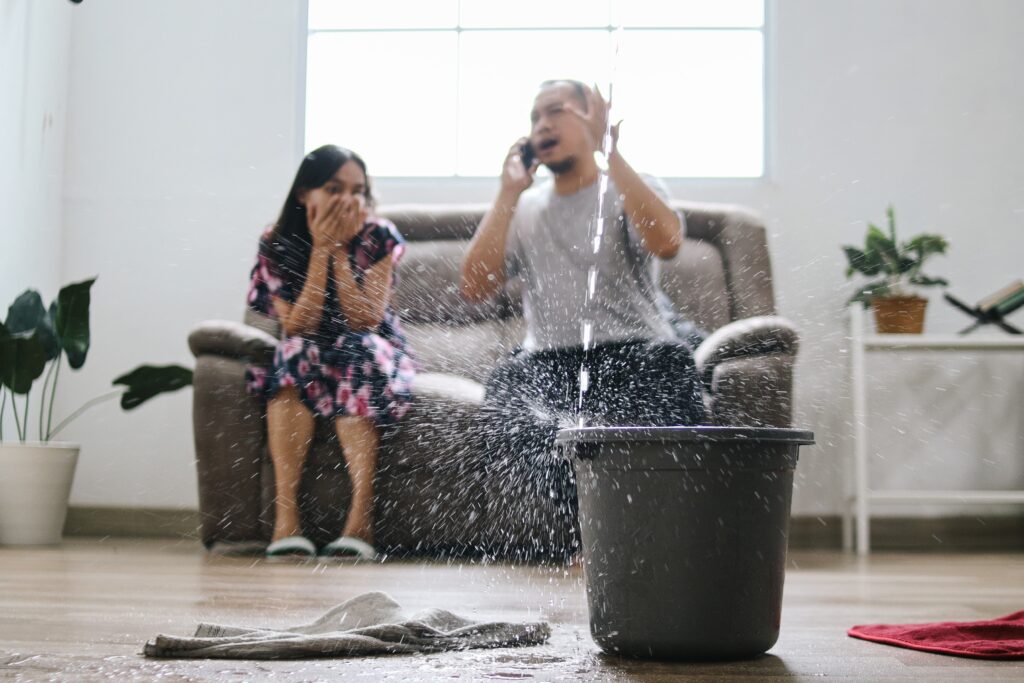
Why Catching a Leaky Roof Early Matters
Ignoring a leaking roof can lead to more than just water damage; it can compromise the structural integrity of your home, resulting in extensive repairs and high costs. Identifying and addressing roof leaks early can save you time, money, and the hassle of dealing with more severe damage later on.
Common Signs You Have a Roof Leak
Roof leaks are often subtle, making them easy to overlook until significant damage has already occurred. Here are some telltale signs that you may have a leaky roof:
- Water Stains on Ceilings: These are one of the most apparent indicators of a roof leak. Water stains often appear as brownish or yellowish marks on your ceiling, signaling that water has seeped through the roof deck and into your home’s interior.
- Peeling Paint: Moisture from a roof leak can cause paint to bubble or peel, especially near roof valleys or along exterior walls.
- Mold Growth: A leaky roof can create the perfect environment for mold to thrive, particularly in areas where water has been pooling unnoticed.
How a Leaky Roof Affects Your Home’s Interior
A leaky roof doesn’t just cause water damage; it can affect various aspects of your home’s interior, leading to costly repairs if not addressed promptly.
Water Stains on Ceilings: A Telltale Sign
Water stains on ceilings are a clear indication that you have a roof leak. These stains are usually a sign of water penetrating the roof deck and soaking into the ceiling joists. Over time, these stains can grow larger, leading to more significant damage, including rotted wood and mold growth. It’s essential to fix a roof leak as soon as water stains are noticed to prevent further damage.
Peeling Paint and What It Means
Peeling paint is another common sign of a roof leak. When moisture gets trapped under the paint on your walls or ceiling, it can cause the paint to bubble, blister, or peel away. This not only affects the aesthetic appeal of your home but also indicates that moisture has breached your home’s interior. Addressing the leak and repainting the affected areas can help restore your home’s appearance and prevent further deterioration.
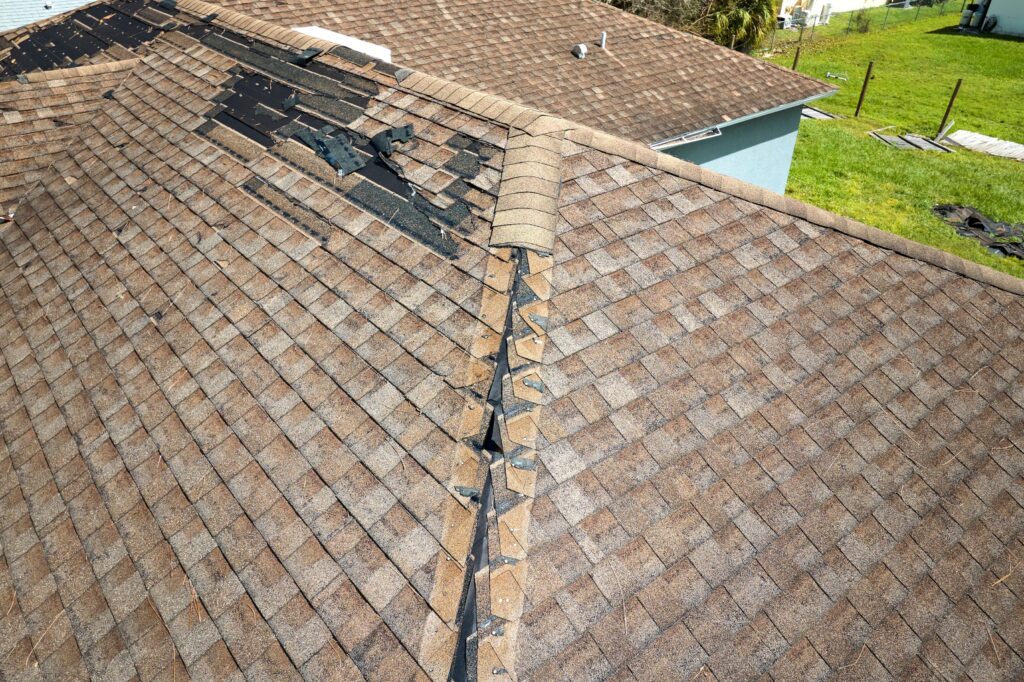
What Causes Roof Leaks? – Roof Leak Warning Signs
Understanding the root causes of roof leaks is crucial for both preventing future leaks and addressing existing ones. From missing shingles to clogged gutters, several factors can lead to a leaking roof. Here, we’ll explore the most common causes and warning signs that homeowners should be aware of.
Missing or Damaged Shingles
One of the primary causes of roof leaks is missing or damaged shingles. Shingles are the first line of defense against the elements, and when they are cracked, curled, or missing, water can easily penetrate the roof and cause leaks. Homeowners should regularly inspect their roof for signs of damaged shingles, especially after a storm or high winds.
Issues with Roof Valleys and Roof Joints
Roof valleys and joints are particularly vulnerable to leaks due to the way they channel water. Improper installation or deterioration over time can lead to water pooling and eventually penetrating the roof sheathing. This is why it’s crucial to regularly inspect these areas for any signs of wear or damage.
Clogged Gutters: A Hidden Culprit
Clogged gutters might not seem like a direct cause of roof leaks, but they can significantly contribute to the problem. When gutters are clogged with leaves, dirt, or debris, water cannot flow away from the roof effectively. Instead, it pools around the roof’s edges, increasing the risk of water seeping under shingles and into the roof deck.
Damaged Flashing and Counter Flashing
Flashing is the material used to seal roof joints and valleys, preventing water from seeping into the home. However, over time, flashing can become damaged or improperly installed, leading to leaks. Damaged flashing around chimneys, skylights, and roof vents is a common cause of roof leaks. Regular inspection and repair of flashing can help prevent these leaks from occurring.
Finding the Source of a Roof Leak
Locating the exact location of a roof leak can be challenging, but it’s a crucial step in the roof repair process. While some leaks are easy to spot, others may require a more detailed investigation to pinpoint their origin.
Start with an Interior Inspection
The first step in finding a roof leak is to start with an interior inspection. Begin by examining the areas where water stains or peeling paint are visible on your ceilings or walls. Follow the trail of water to its highest point, which will usually lead you closer to the source of the leak. In some cases, you may need to check the attic to trace the leak back to the roof deck.
Exterior Roof Inspection Essentials
Once you’ve identified potential problem areas from the inside, it’s time to move outside for a thorough roof inspection. This inspection should include checking for missing or damaged shingles, inspecting roof valleys and joints, and examining flashing around roof penetrations such as chimneys and vents.
Using a Garden Hose for the Water Spray Test
If the source of the leak is still unclear, a garden hose can be an invaluable tool. By simulating rainfall, you can narrow down the exact location of the leak. Start at the lowest point of the roof and work your way up, spraying water in sections until you identify where it’s entering the home. This method, known as the water spray test, is especially useful for finding roof leaks that are difficult to detect visually.

The Roof Repair Process: Fixing Leaks
Once you’ve located the source of the leak, it’s time to address the problem head-on. Depending on the severity of the damage, you may opt for a DIY repair or call in a professional roofing contractor. Here’s what you need to know about the roof repair process.
DIY vs. Professional Roof Repairs: What to Consider
Deciding whether to tackle a roof repair on your own or hire a professional roofer depends on several factors, including the complexity of the repair, your experience, and the potential risks involved. While minor repairs, such as replacing missing shingles or applying roofing cement to a small leak, can be handled by most homeowners, more extensive repairs, like fixing flashing issues or dealing with rotted wood, often require professional expertise.
Step-by-Step Guide to Fixing Minor Roof Leaks
For those who are comfortable with DIY repairs, fixing minor roof leaks can be a straightforward process. Here’s a step-by-step guide:
- Identify the Problem Area: Use the water spray test or visual inspection to locate the leak.
- Remove Damaged Shingles: Carefully lift the surrounding shingles and remove any damaged ones.
- Apply Roofing Cement: Apply a generous amount of roofing cement to the exposed area and the underside of the surrounding shingles.
- Replace Shingles: Install new shingles, ensuring they are properly aligned and secured with roofing nails.
- Seal the Area: Use additional roofing cement to seal the edges and any exposed nails, preventing future leaks.
Repairing Damaged Flashing and Missing Shingles
Repairing damaged flashing and replacing missing shingles are common roof repairs that can prevent further water damage. When dealing with flashing issues, it’s essential to remove any old, damaged flashing and install new flashing securely, ensuring a watertight seal. For missing shingles, it’s crucial to replace them promptly to avoid exposing the roof deck to the elements.
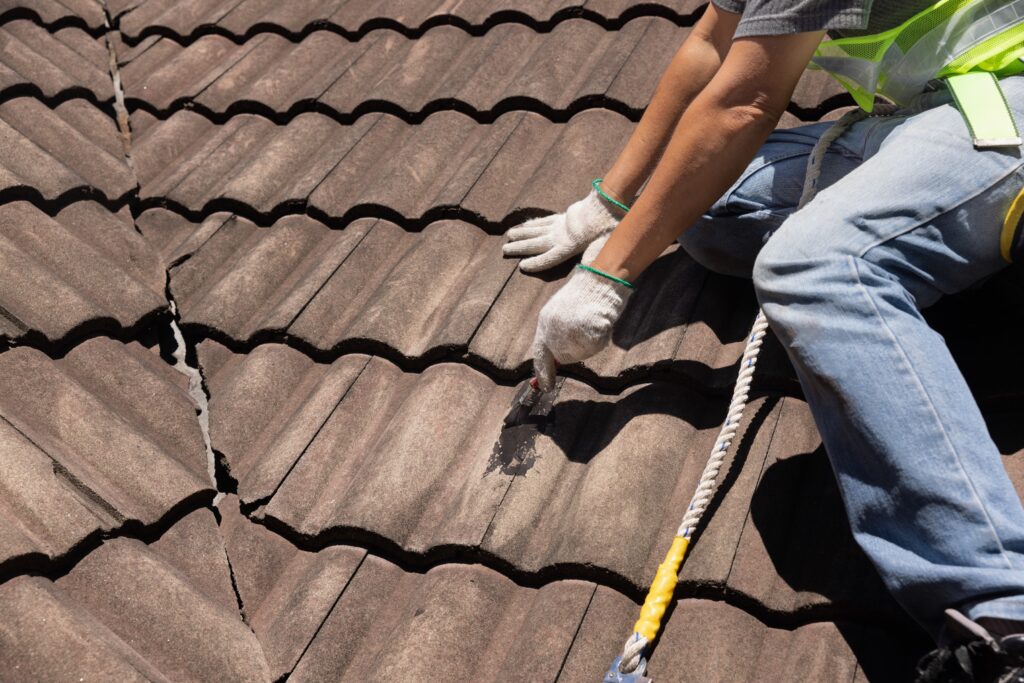
How to Prevent Future Roof Leaks
Preventing future roof leaks is about being proactive and ensuring that your roof remains in top condition. Regular maintenance, timely inspections, and proper ventilation are key components in extending the life of your roof and avoiding costly repairs down the line.
Regular Maintenance Tips for Longevity
Regular maintenance is essential in preventing roof leaks and ensuring your roof ages gracefully. Here are some maintenance tips that can help you avoid common roof leaks:
- Inspect Your Roof Twice a Year: Conduct a thorough inspection of your roof in both the spring and fall. Look for damaged shingles, signs of wear around roof valleys, and check for clogged gutters.
- Clean Gutters Regularly: Clogged gutters are a major cause of roof leaks. Make it a habit to clean your gutters at least twice a year or more often if you have overhanging trees.
- Trim Overhanging Branches: Trees that hang over your roof can drop leaves and branches that contribute to clogged gutters. They can also rub against the roof, damaging shingles.
- Check for Roof Debris: Leaves, twigs, and other debris can accumulate on your roof, especially in roof valleys. This debris can trap moisture, leading to roof leaks over time.
- Ensure Proper Attic Ventilation: Proper ventilation is crucial to prevent moisture buildup in your attic, which can lead to mold growth and roof leaks.
Importance of Regular Roof Inspections
Regular roof inspections by a professional roofing contractor can catch potential problems before they turn into major leaks. A roofing contractor can identify issues that may not be visible during a standard homeowner inspection, such as damaged flashing, improperly driven nails, or signs of rot in the roof decking.
During a professional inspection, the contractor will check the condition of the shingles, the integrity of the flashing around roof joints, and the overall condition of the roof deck. They may also use specialized equipment to detect hidden moisture and pinpoint leak-prone areas.
Investing in Proper Roof Ventilation
Proper roof ventilation is a critical component in preventing roof leaks and prolonging the life of your roof. Without adequate ventilation, heat and moisture can build up in the attic, leading to problems such as warped roof decking, mold growth, and premature aging of roofing materials.
There are several types of roof vents, including ridge vents, soffit vents, and gable vents, each serving a specific purpose in maintaining airflow. Ensuring that your roof has the right balance of intake and exhaust vents can prevent moisture buildup and help maintain a healthy roofing system.
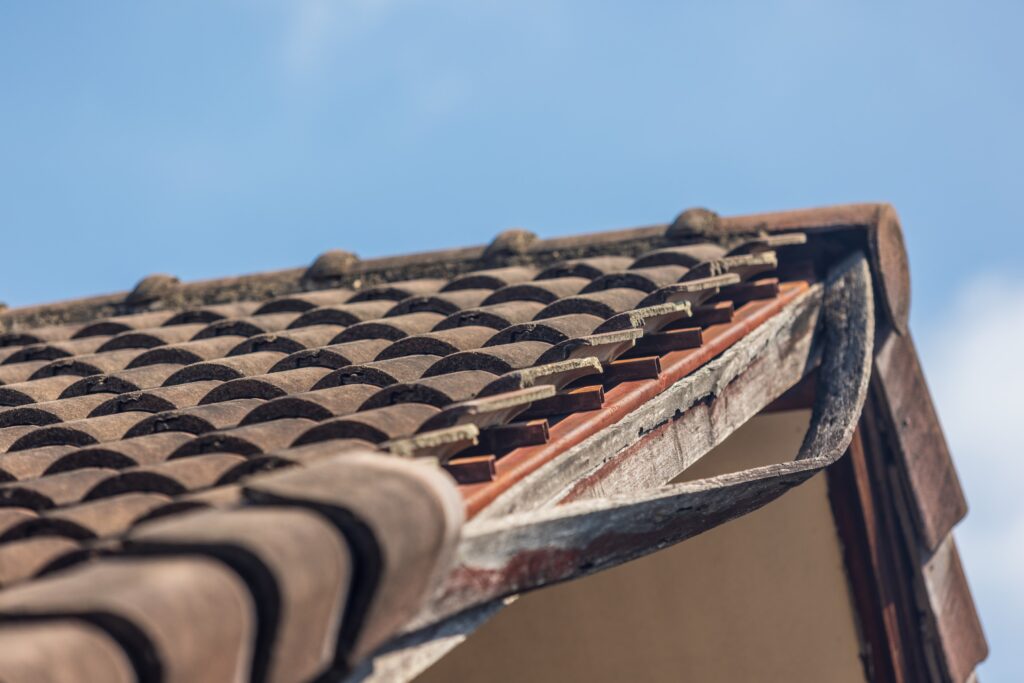
Weather’s Impact on Roof Leaks
Weather is one of the most significant factors contributing to roof leaks. From heavy storms to the formation of ice dams, understanding how weather affects your roof can help you take preventative measures to protect your home.
How Storm Damage Leads to Roof Leaks
Storm damage is one of the leading causes of roof leaks. High winds, heavy rain, and hail can cause immediate damage to your roof, leading to missing or damaged shingles, punctured roofing material, and weakened roof valleys. After a storm, it’s essential to inspect your roof for visible damage and address any issues promptly to prevent leaks.
For example, asphalt shingles can be torn off by strong winds, exposing the roof deck to rain and moisture. Additionally, debris such as branches or hail can puncture the roof, leading to leaks that may not be immediately visible. It’s also common for flashing issues to arise after a storm, as the force of the wind can dislodge or damage flashing around chimneys, vents, and skylights.
Dealing with Ice Dams and Roof Damage
Ice dams are another weather-related issue that can lead to roof leaks. Ice dams form when the snow on your roof melts and refreezes at the edges, creating a barrier that prevents additional snowmelt from draining properly. As water backs up behind the ice dam, it can seep under the shingles and into the roof deck, causing leaks.
Preventing ice dams involves proper insulation and ventilation in the attic. By keeping the attic cold, you can prevent the snow from melting too quickly and reduce the risk of ice dams forming. In regions prone to heavy snowfall, installing ice and water shield underlayment along the roof edges can provide an extra layer of protection against ice dams.
Does Home Insurance Cover Roof Leaks?
Understanding your home insurance policy and what it covers is crucial when dealing with roof leaks. While insurance can help mitigate the financial burden of roof repairs, it’s important to know the specifics of your coverage.
Understanding Your Insurance Policy
Not all roof leaks are covered by home insurance, and the coverage often depends on the cause of the leak. Generally, sudden and accidental damage caused by storms, hail, or other unexpected events may be covered. However, leaks resulting from a lack of maintenance, wear and tear, or improper installation may not be covered.
To determine if your roof leak is covered, review your insurance policy carefully. Pay attention to any exclusions or limitations, particularly regarding roof leaks and water damage. Some policies may require that the roof be in good condition at the time of the damage, meaning regular maintenance and inspections are essential to ensure coverage.
Steps to Take When Filing a Claim
If your roof leak is covered by insurance, there are several steps you should take to file a claim successfully:
- Document the Damage: Take photos and videos of the damage to provide evidence when filing your claim. Include images of the water stains, damaged shingles, and any other affected areas.
- Contact Your Insurance Company: Report the damage as soon as possible. The sooner you file a claim, the quicker you can start the repair process.
- Get an Estimate: Obtain an estimate from a professional roofing contractor to understand the repair cost. This estimate will be important when negotiating with your insurance company.
- Meet with the Adjuster: Your insurance company will likely send an adjuster to inspect the damage. Be present during this inspection to ensure all damage is documented accurately.
- Review the Settlement: Once the adjuster has completed their inspection, your insurance company will offer a settlement. Review the settlement carefully and ensure it covers all necessary repairs.
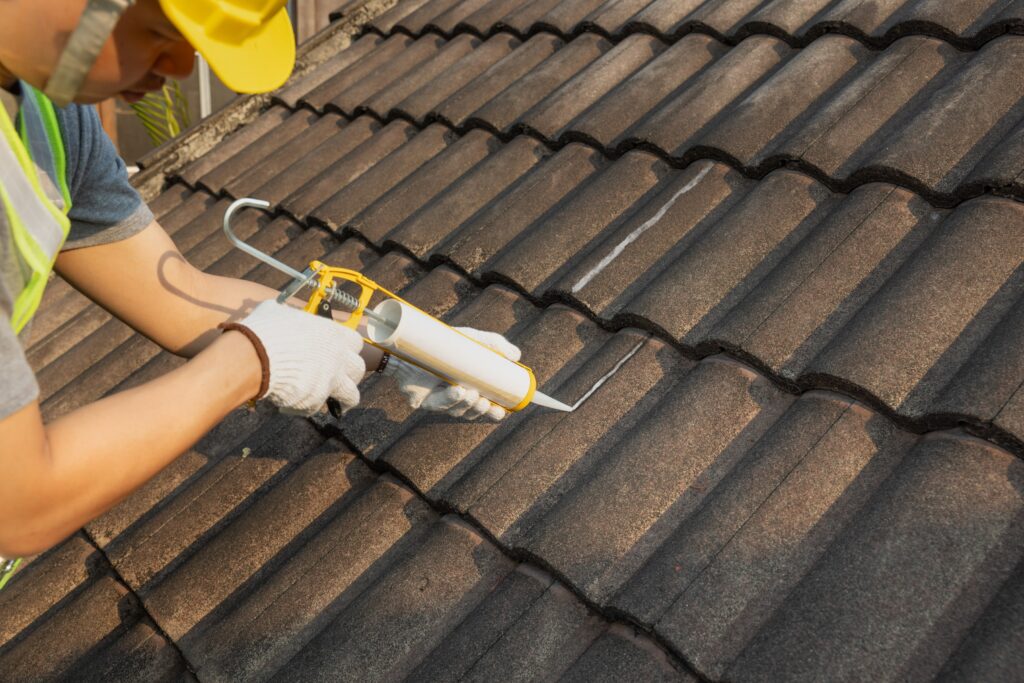
Cost of Roof Repairs: What to Expect
Roof repair costs can vary widely depending on the extent of the damage, the type of roofing material, and whether you choose to hire a professional roofer or attempt a DIY fix. Understanding these costs can help you plan and budget for necessary repairs.
Factors That Affect Roof Repair Costs
Several factors influence the cost of roof repairs, including:
- Extent of Damage: Minor repairs, such as fixing leaks around a chimney or replacing a few missing shingles, are generally less expensive than extensive repairs involving large sections of the roof deck.
- Type of Roofing Material: The type of roofing material used can significantly impact repair costs. Asphalt shingles, for example, are typically more affordable to repair than materials like slate or metal.
- Labor Costs: Labor costs vary depending on the complexity of the repair and the region in which you live. In some cases, labor can make up a significant portion of the total repair cost.
- Location of the Damage: Roof repairs in difficult-to-access areas, such as steep roof slopes or roof valleys, may cost more due to the additional time and effort required.
- Roof Age: Older roofs may require more extensive repairs, especially if the roof decking or underlying structure has been compromised.
Comparing Minor Repairs vs. Extensive Repairs
When comparing minor and extensive roof repairs, it’s important to consider both the immediate costs and the long-term impact on your home. Minor repairs, such as replacing a few damaged shingles or fixing flashing issues, are typically more affordable and can often be completed quickly. However, if the damage is widespread, such as rotted wood in the roof decking or multiple leaks throughout the roof, more extensive repairs may be necessary.
In some cases, extensive repairs may even warrant a roof replacement, particularly if the roof is nearing the end of its lifespan. While a roof replacement is a larger upfront investment, it can save you money in the long run by reducing the need for frequent repairs and improving your home’s energy efficiency.
Table: Average Cost of Roof Repairs by Type
These costs are averages and can vary depending on factors such as location, the extent of the damage, and the materials used.
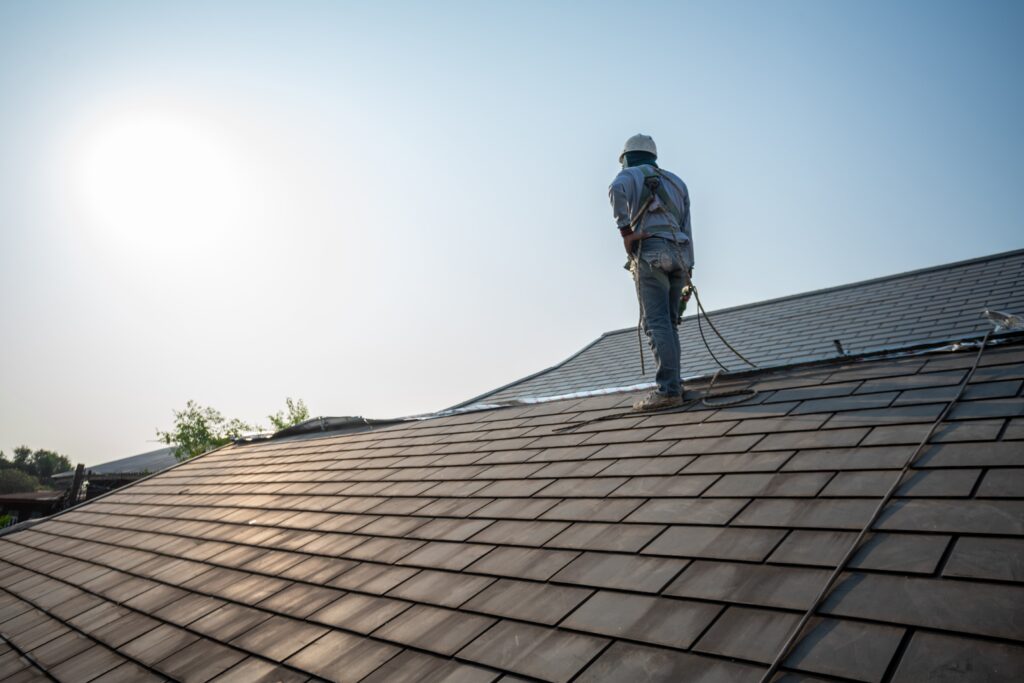
When to Call a Professional Roofing Contractor
Knowing when to call in a professional roofing contractor is crucial to maintaining the safety and integrity of your roof. While some minor roof repairs can be handled by homeowners, others require the expertise and tools that only a professional roofer can provide. Understanding the signs that indicate it’s time to hire a professional can save you from more extensive damage and costly repairs in the future.
What to Look for in a Roofing Company
Choosing the right roofing company is critical to ensuring that your roof repair or replacement is done correctly and efficiently. Here are some key factors to consider when selecting a roofing contractor:
- Experience and Reputation: Look for a roofing company with a solid track record and positive reviews from previous clients. A company with years of experience is more likely to have encountered a variety of roofing issues and will know how to address them effectively.
- Licensing and Insurance: Ensure that the roofing contractor you choose is licensed and insured. This protects you in case of accidents or damage during the repair process. In Ontario, for instance, reputable roofing companies should carry liability insurance and workers’ compensation coverage.
- Warranty and Guarantees: A reputable roofing contractor should offer a warranty on both the materials and workmanship. This guarantee gives you peace of mind that the work will be done to a high standard and that the company stands behind its work.
- Detailed Estimates: Before beginning any work, the contractor should provide a detailed estimate that includes the cost of materials, labor, and any additional expenses. This transparency helps you avoid unexpected costs and ensures that you understand what you’re paying for.
Questions to Ask Your Roofing Contractor
When hiring a roofing contractor, it’s important to ask the right questions to ensure that you’re making an informed decision. Here are some questions to consider:
- What is Your Experience with Similar Projects? Ensure the contractor has experience with the specific type of repair or replacement you need, whether it’s fixing roof leaks, replacing damaged shingles, or dealing with complex roof valleys.
- Can You Provide References? Ask for references from previous clients who had similar work done. This can give you insight into the contractor’s quality of work and customer service.
- What is the Timeline for Completion? Understand the estimated timeline for your project, including start and completion dates. This helps you plan accordingly and sets expectations for both parties.
- How Do You Handle Unexpected Issues? Roof repairs can sometimes uncover additional problems. It’s important to know how the contractor will handle these situations and whether it will affect the cost or timeline.
- What Safety Measures Do You Take? Roofing can be dangerous work. Ensure that the contractor follows proper safety protocols to protect both the workers and your property.
Hiring a professional roofing contractor is an investment in your home’s longevity and safety. By asking these questions and doing your due diligence, you can find a reputable contractor who will provide quality service and ensure your roof remains in top condition.
Maintaining a healthy, leak-free roof is crucial to the overall integrity of your home. By understanding the common causes of roof leaks, learning how to spot early warning signs, and knowing when to call in a professional, you can protect your home from the costly damage that a leaky roof can cause. Regular inspections, proper maintenance, and timely repairs are key to ensuring that your roof remains strong and durable for years to come.
Remember, while some minor repairs can be handled on your own, more complex issues, such as extensive roof leaks, damaged flashing, or structural damage, require the expertise of a professional roofing contractor. Investing in professional roof repairs with Rapid Roofing can safeguard your home and provide peace of mind knowing that the job has been done right.